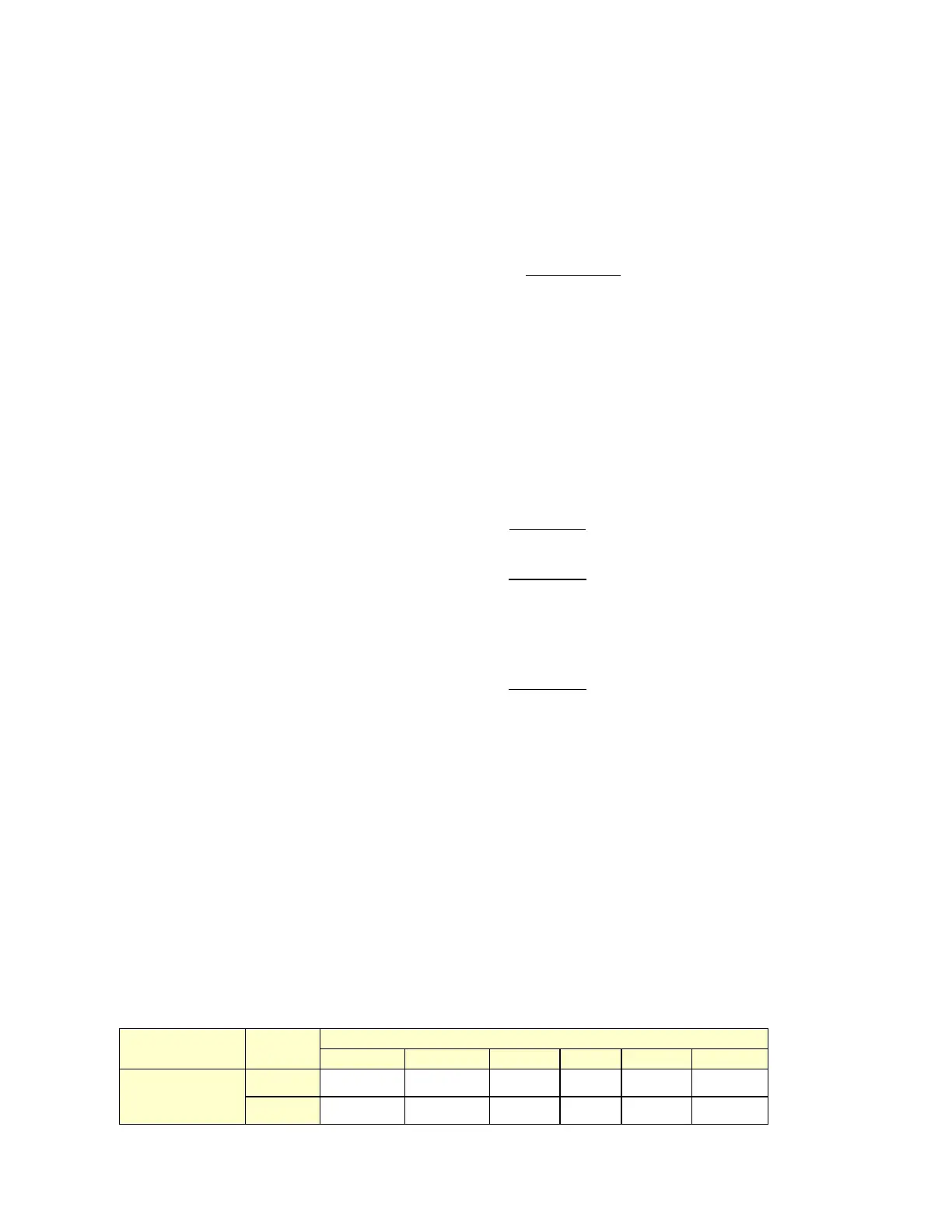Page 81 of 91
© Retrotec 2017
These n values can be measured simply by doing a multi-point Blower Door or Duct Test. The result will be
an n and a C (coefficient) so flow at any pressure can then be calculated by using the equation:
The gauge uses the “n” value to extrapolate for flows at other pressures. Because the extrapolation
function is a ratio of two flows from the same fan, the C value cancels out.
For example: If we guess at the n value of a duct as being 0.6 and measure 100 CFM at 20 Pa (by accident
or by design), then the DM-2 will complete the following calculation to estimate the flow at 25 Pa:
If the test pressure (20 in this case) is close to the desired reference pressure (25 Pa in this case), then the
correction is small and the value of n does not play as large a role. However, if the test pressure is much
higher or lower than the reference pressure, the error can be greater.
The @ Pressure feature is very useful for ensuring that results taken when the pressure was not adjusted
perfectly are still accurate.
To continue the above example: The flow at 20 Pa is 100 CFM. Actual n is 0.7, but this is unknown.
Instead, 0.6 will be used.
The gauge would calculate:
However, if it was known that n was 0.7, the flow at 25 should have been:
This value is less than 3% off from what it should be. If the test pressure was within 1 or 2 Pa of the
reference pressure of 25 Pa, the @ Pressure reading would be exact.
Errors occur in estimated flow if gauge and actual “n” don’t match
If a gauge has the extrapolation or flow exponent “n” set to an assumed value but the actual exponent (a
true measured exponent value for the building) differs, the flow values estimated by the gauge when using
the @ Pressure feature will be off by an error amount. The tables below show the percent error that can
result from entering an incorrect exponent value in the gauge and using the [@ Pressure] function.
If the “n” value on the gauge is set to 0.65 and the actual enclosure n is different, a small error, as shown in
Table 12 will result if the [@ Pressure] function is used at the Achieved Pressure to estimate result at 50 Pa.
Table 12: Errors in Estimated Flow at 50 Pa if gauge "n"= 0.65 differs from actual n

